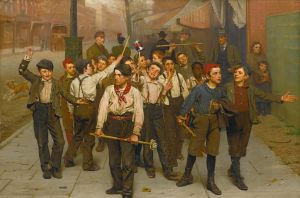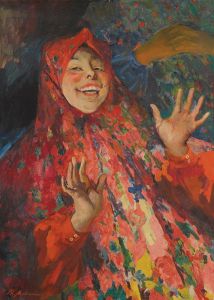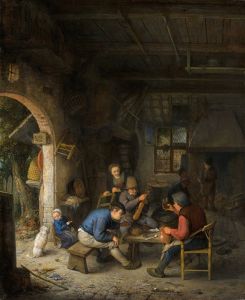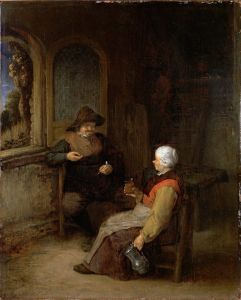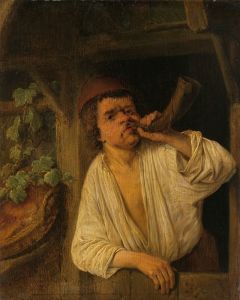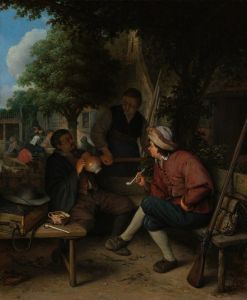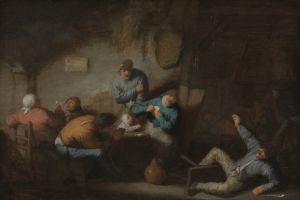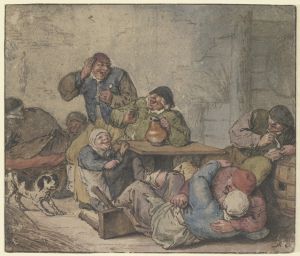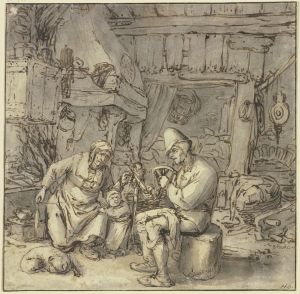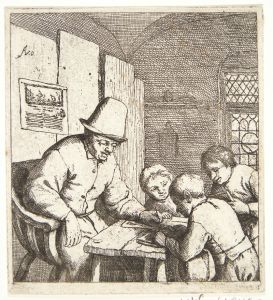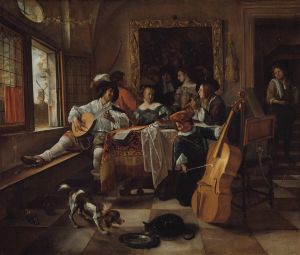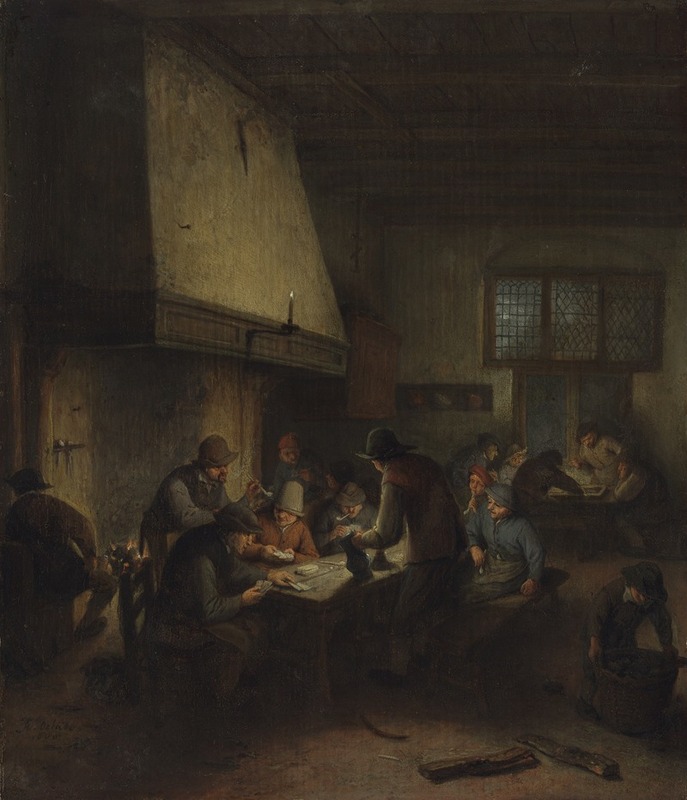
Tavern Scene
A hand-painted replica of Adriaen van Ostade’s masterpiece Tavern Scene, meticulously crafted by professional artists to capture the true essence of the original. Each piece is created with museum-quality canvas and rare mineral pigments, carefully painted by experienced artists with delicate brushstrokes and rich, layered colors to perfectly recreate the texture of the original artwork. Unlike machine-printed reproductions, this hand-painted version brings the painting to life, infused with the artist’s emotions and skill in every stroke. Whether for personal collection or home decoration, it instantly elevates the artistic atmosphere of any space.
Adriaen van Ostade was a Dutch Golden Age painter known for his genre scenes depicting peasant life. One of his notable works is the "Tavern Scene," which exemplifies his skill in capturing the everyday activities and environments of the lower classes in 17th-century Holland. Van Ostade was born in 1610 in Haarlem, where he spent most of his life and career. He was a pupil of Frans Hals, which influenced his early style, characterized by lively compositions and a loose, expressive brushwork.
The "Tavern Scene" is a quintessential example of van Ostade's work, showcasing his ability to depict the lively and often chaotic atmosphere of a Dutch tavern. The painting typically features a group of peasants engaged in various activities such as drinking, smoking, playing cards, or engaging in animated conversation. Van Ostade's attention to detail is evident in the way he captures the textures of the wooden beams, the worn furniture, and the clothing of the figures, all of which contribute to the authenticity of the scene.
Van Ostade's use of light and shadow in the "Tavern Scene" is particularly noteworthy. He often employed a warm, earthy palette that enhanced the intimate and cozy atmosphere of the interior settings. The light usually emanates from a central source, such as a window or a fireplace, casting soft shadows and highlighting the expressions and gestures of the figures. This technique not only adds depth to the composition but also draws the viewer's attention to the interactions between the characters.
The "Tavern Scene" reflects the social and cultural context of the time, offering insights into the daily lives of the common people in the Dutch Republic. During the 17th century, taverns were important social hubs where individuals from various walks of life gathered to relax, socialize, and conduct business. Van Ostade's depiction of these scenes provides a glimpse into the customs, fashion, and social dynamics of the period.
Adriaen van Ostade's work, including the "Tavern Scene," was highly regarded during his lifetime and continues to be appreciated for its historical and artistic value. His paintings were popular among collectors, and he was a successful artist who produced a large body of work, including etchings and drawings. Van Ostade's influence extended beyond his own time, as he inspired other artists who sought to capture the essence of everyday life in their work.
In summary, Adriaen van Ostade's "Tavern Scene" is a masterful representation of 17th-century Dutch genre painting. Through his detailed and lively depiction of peasant life, van Ostade offers a window into the social fabric of his time, characterized by its vibrant tavern culture. His skillful use of light, composition, and attention to detail make this painting a significant example of the genre, reflecting both the artistic trends and the societal norms of the Dutch Golden Age.





